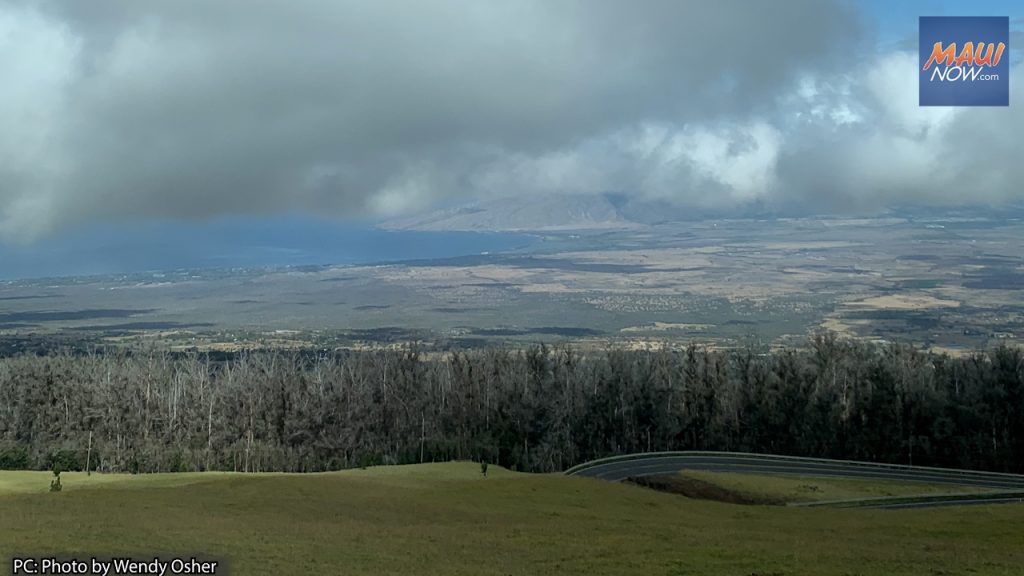Drought returns to Maui County during ‘strange’ wet season

After a brief reprieve in December, Maui County descended again into drought as below-average rainfall dried up the state last month, recent weather reports show.
The changes are part of a “strange” wet season, according to Kevin Kodama, senior service hydrologist for the National Weather Service in Honolulu.
The latest U.S. Drought Monitor report released Thursday shows that Maui County and Hawaiʻi island are now covered in moderate drought conditions. Moderate drought includes some damage to crops and pastures; low streams, reservoirs or wells; and possible voluntary water-use restriction requests.
After a drenching in December, all of Maui County’s gauges recorded below-average rainfall for the month of January, which is nearly less than 20% of the average, Kodama said in a monthly precipitation summary issued this week.
Last month the United States Geological Survey rain gauge at West Wailuaiki Stream had the highest monthly total of about 4 inches, the summary said. That gauge had the highest daily total of 3 inches Jan. 12.
Kahului Airport — which had 0.08 inches — marked its lowest January total since 2001 and its fourth lowest January total on record.
Rain gauges at Haʻikū, Māhinahina, Makapulapai and Pukalani recorded their lowest January totals since 2012.
The current wet season, which started in October and goes until April, has been a “strange” one, Kodama said. After a dry October and November, December saw very wet conditions, which helped to alleviate drought.
The wet pattern continued into early this year as an area of low pressure centered northwest of the state pulled moist air over the island chain from the south on New Year’s Day, Kodama said.
The moist air, combined with a disturbance aloft, created unstable conditions that produced 3 to 7 inches of rain over a localized area in East Maui between Hāna and Kīpahulu, along with 3 to 6 inches of rain over portions of Oʻahu and 1 to 2 inches on Kauaʻi.
Then lower rainfall started again last month.
“The low daily rainfall totals during this period statewide looked more like an El Niño rainfall pattern instead of the La Niña event that is currently in progress,” Kodama said. “The sudden shift to a persistent dry pattern has already resulted in moderate drought conditions in Maui County and the Big Island due to low rainfall and stream flow conditions.”
Going into the current rainy season, Maui County had the worst drought conditions in the state. Farmers and ranchers reported significant financial losses and a water shortage was declared.








